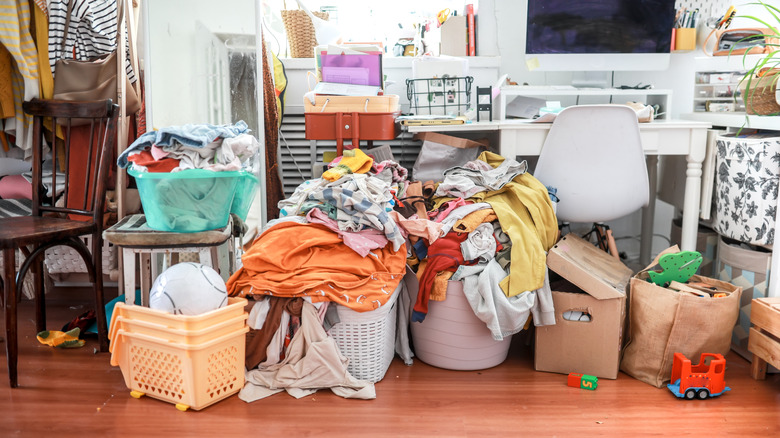The Decluttering Method That Can Make The Process Go Much More Smoothly
One of the most common obstacles to cleaning and organizational projects is feeling completely overwhelmed by the largeness and scope of the task. This can lead to putting off projects forever or abandoning them halfway in. There are many approaches to cleaning and organizing your home, including popular protocols like the KonMari method of getting rid of things that no longer evoke joy. However, other methods are more methodical than philosophical, offering guidance on how to progress efficiently through your space. For instance, the ski-slope method of cleaning and organizing your home involves breaking the room into small triangular sections and moving from side to side. This practical approach may be just the thing you need to help clean and organize your space.
This method for a cleaner, more organized home was coined by therapist and organizer Anita Yokota in her book "Home Therapy." It adopts its inspiration from the famous winter sport, mimicking the motion in which the skier moves down the mountain from side to side and top to bottom. When applied to cleaning or organizing, this translates into breaking the room into small sections, then moving outward from a starting corner until you've covered the whole room.
How to use the ski-slope method
Begin in one corner section of the room, imaging a triangle-shaped block of space. Thoroughly deal with this corner, tidying, organizing, and throwing away items. You should also collect anything that doesn't belong in that particular space and set it aside in a box to be placed elsewhere after the segment of the room is finished. The ski-slope method allows you to move quickly and thoroughly without feeling too overwhelmed with the task of tackling the entire room or getting distracted. Once you have completed one corner, move in a zigzag motion to the next section of the room. Seeing progress often propels you onward to the next section, and before long, you'll have decluttered the entire room.
You can use the ski-slope method alone, using a single box to collect items to be moved elsewhere when cleaning and tidying, or you can employ the four-basket method to help with larger decluttering projects. Label the boxes "keep," "trash," "sell," and "donate," sorting their contents as you go. Or, use the popular doom box method to help you declutter as you work in a ski-slope method formation if you're not quite sure what you want to keep or discard.

